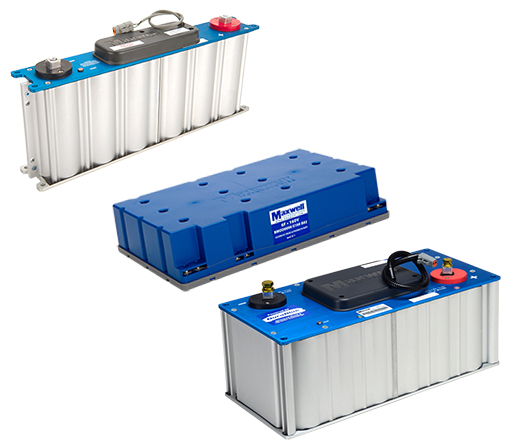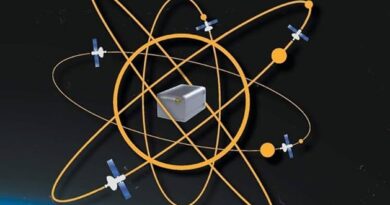Ultracapacitor For Fast Charging Battery 24
Ultracapacitor
Supercapacitors, sometimes referred to as electrochemical capacitors or ultracapacitors, are sophisticated energy storage devices that fill the void left by batteries and traditional capacitors. Ultracapacitors use electrochemical techniques to achieve far higher capacitance and energy density than ordinary capacitors, which store energy through electrostatic charges.
Early in the 1950s, researchers at General Electric began to investigate the idea of ultracapacitors. Standard Oil of Ohio (SOHIO) recognized the promise of porous carbon materials for high-capacitance storage, however, and this led to the modern development and commercialization of ultracapacitors in the 1960s. Since then, the technology has advanced because of developments in nanomaterials and production processes.

The manufacturer and the intended application determine how exactly an ultracapacitor is constructed.
The arrangement of the parts is such that the electrolyte and electrode materials have as much surface area contact as possible, which increases capacitance.
Switch Voltage
A per-cell voltage of about 2.7V is normal for ultracapacitors. Several ultracapacitor cells must be coupled in series to achieve greater voltage applications due to this low voltage. To obtain the desired voltage, for example, in applications that require 12 volts, a minimum of five cells must be linked in series.
Time-Invariant
An ultracapacitor’s rate of charging and discharging is determined by its time constant, which is the product of its capacitance (C) and resistance (R). Unlike conventional capacitors, ultracapacitors have comparatively lengthy time constants, which means that high-frequency or AC circuits cannot utilize them. For uses needing quick energy release and short-term energy storage, they are better suited.
Continuity
Ultracapacitors offer remarkable stability, which is one of their main advantages. The typical battery life is between 2,000 and 3,000 cycles; in contrast, they can endure over a million charge and discharge cycles. For uses requiring frequent cycling, this renders ultracapacitors extremely dependable and robust.
This is mostly due to their unique design, which combines an electrode material with a larger surface area with a thin dielectric separator.
supercapacitor provide a number of advantages over batteries, including the capacity to deliver energy in bursts at a considerably faster rate, a much longer lifespan (millions of cycles), and superior cycling performance. They operate with minimum energy loss and heat creation due to their low internal resistance, making them extremely efficient.
From consumer electronics and renewable energy systems to automotive and industrial applications, ultracapacitors are used in a wide range of industries. They are employed in electric cars to increase power and perform regenerative braking. They mitigate power variations from renewable energy sources like solar and wind.
For such a related article, please read
The development of nanomaterials, especially graphene and other carbon-based materials, which improve their performance characteristics, has been the driving force behind their development. Ultracapacitors are predicted to be one of the most important components of energy storage in the future as technology develops, helping to create more sustainable and effective power management systems.
Working Principle
Instead of the electrostatic charges utilized in regular capacitors, the basic operating concept of ultracapacitors is based on electrochemical processes. The two main methods by which ultracapacitors store energy are:
Electrochemical Double-Layer Capacitors (EDLCs):
An electric double layer of ions is formed at the interface between a conducting electrode and an electrolyte in electrochemical double-layer capacitors (EDLCs), which store energy in this way. A double layer of charge is produced in the electrolyte when a voltage is applied because the positive and negative ions migrate toward their respective electrodes.
Pseudocapacitors:
The process of electron transport between the electrode and electrolyte happens in pseudocapacitors, which store energy through faradaic redox processes. With this approach, electrical energy is stored via chemical reactions that are reversible.
Which types of materials are used in an ultracapacitor?
The materials used for electrodes and electrolytes have a major impact on ultracapacitors’ performance:
Materials for Electrodes:
Activated carbon: Because of its large surface area and strong electrical conductivity, it is widely used.
Graphen: The high surface area and superior conductivity of nanotubes increase capacitance and energy density.Graphene provides remarkable mechanical strength and electrical conductivity, improving ultracapacitor performance.
Metal oxides: Due to their redox characteristics, materials such as ruthenium oxide and manganese dioxide are used in pseudocapacitors.
electrolytes
High ionic conductivity and a narrow voltage range are characteristics of aqueous electrolytes, such as potassium hydroxide or sulfuric acid.
Organic electrolytes: Usually made with solvents like acetonitrile, they offer a greater voltage range and stability. High-performance applications can benefit from the wide voltage range and thermal stability provided by ionic liquids.
What are the advantages and disadvantages of an ultracapacitor?
Ultracapacitors have a number of noteworthy benefits.
High Power Density: They are perfect for applications that need fast power delivery because they can deliver energy in short bursts.
Quick Charge/Discharge: Able to charge and discharge considerably more quickly than with batteries.
Long Cycle Life: able to withstand millions of cycles of charging and discharging without noticeably degrading.
Broad Temperature Range: Functions effectively in a variety of environmental settings.
Low Maintenance: In comparison to conventional batteries, they require less maintenance.
Environmentally friendly: Recyclable materials are simpler to handle, safer overall, and less hazardous than batteries.
Drawbacks
Ultracapacitors have certain drawbacks in spite of their advantages.
Lower Energy Density: The energy storage capacity of ultracapacitors is lower than that of batteries.
Self-Discharge: Excessive self-discharge rates over time result in energy loss compared to batteries.
The cost of modern materials and production techniques is higher.
Uses of Ultracapacitor
supercapacitor special qualities make them useful in a variety of applications.
Automobiles:
Electric cars (EVs) are used for rapid power increases and regenerative braking.
Start-Stop Systems: By offering quick energy for engine restarts, these systems improve fuel efficiency.
Green Energy:
Wind and solar energy can help reduce power outages and increase grid stability.
Energy Storage Systems: Boost renewable energy systems’ dependability and efficiency.
Electronics for consumers:
Portable Devices: Give cellphones, computers, and cameras brief energy boosts.
Power backup is a feature of uninterruptible power supplies (UPS) that provide instantaneous power in the event of an outage.
Industrial:
Heavy Machinery: Supply electricity for emergency power supplies and peak load leveling.
Smart Grids: By offering quick-reaction energy storage, these systems increase grid efficiency and stability.
Logistics:
Public transportation: for regenerative braking and energy recovery, utilized in trams, buses, and trains.
Aerospace: Upgrade satellite and aircraft power management systems.
Prospects for Tomorrow
With further research aimed at increasing energy density, cutting costs, and creating novel materials, the future of ultracapacitors is bright. It is anticipated that advances in nanotechnology, such as carbon nanotubes and graphene, will improve ultracapacitors’ functionality even further.
Ultracapacitors are expected to be a key component in the global evolution of energy systems as the need for effective and sustainable energy storage solutions increases.
To sum up, supercapacitor provide a strong and adaptable energy storage solution that may be used in a variety of sectors. They are an important part of contemporary energy management systems because of their special qualities, which include high power density, quick charge/discharge times, and long cycle life.
Ultracapacitors are expected to play a bigger and bigger role in energy storage technologies in the future as they continue to evolve.
What is the purpose of an ultracapacitor?
A long-lasting energy storage device that can store and release electrical energy more quickly than a battery is an ultracapacitor, often referred to as a supercapacitor or an electric double layer capacitor.
What is the lifespan of an ultracapacitor?
The lifespan of supercapacitors is between 100,000 and a million cycles.
What is the charge time of supercapacitor?
Supercapacitors require 1–10 seconds to charge. The charge characteristic is comparable to that of an electrochemical battery, and the charger’s capacity to handle current largely determines how much current can be charged. While the topping charge will require more time, the initial charge can be completed fairly quickly.



